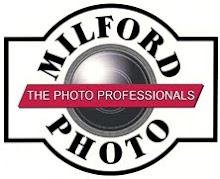Friday, May 28, 2010
Go Catch Yourself a Full Moon!
Seeing the full moon rise above the treetops as I worked in my garden yesterday evening reminded me of this shot I took last summer at Chincoteague National Wildlife Refuge in Virginia, so I went and dug it out to share. Photographing the full moon is actually pretty easy: just use the longest lens you have (I used a 70-300mm Nikkor which is the equivalent of a 450mm when it's fully zoomed on my Nikon D90 body) and put your camera on a sturdy tripod. You must use some kind of a land reference (here just a snippet of dunes at the far side of a small bay) in order to provide some sense of scale for the moon--otherwise it's just lost in the sky and you can't tell how big it looks. As far as exposure goes, I trusted my D90's matrix metering for this shot, but I did shoot in RAW so that I could adjust the exposure and white balance after the fact. I did tweak both, but only a small amount (I made the sky a bit bluer and I brightened the shot about one stop). The great thing about shooting a full moon is that you get a few days where it's pretty full each month--and you get a new chance each month!
Sunday, May 23, 2010
Lighthouse Point Park: Great Local Location!
If you live in the Milford area and you're looking for a great picture-taking idea, check out Lighthouse Point Park in New Haven. The park is beautifully situated at the entrance to New Haven harbor and the lighthouse itself is very nicely maintained and just pretty as a picture. There is also a great old carousel just across a small road from the lighthouse and plenty of nice beaches. A great place to wander and photograph at sunset because the lighthouse faces west and so gets gorgeous late-afternoon lighting. I shot the scene here just as the sun was setting and you couldn't ask for nicer light. Day passes are $10 for nonresidents or you can buy a season's pass for $50--worth it if you plan to visit more than five times during the summer. The parking is very close to the lighthouse and carousel.
Use Textures for a Sense of Touch
Because photographs only exist in two dimensions (height and width) and have no depth (the third dimension), it's important to emphasize textures to give photos a "touch" factor. There are all kinds of textures that can be brought out in a photo, from the slippery smooth surface of wet seaweed to the rough surface of a gravel parking lot. Bringing out the texture is largely a matter of getting close enough to it so that it shows clearly and then using lighting to exaggerate it. Light that comes from the side or the rear of your subject works best because that kind of oblique lighting creates lots of tiny shadows and highlights and it's that contrast that draws out the surface quality of subjects. Sometimes top lighting will also draw out textures, as long as the angle is steep enough. For example, I shot this old peeling carving of a Chinaman with the light coming from almost directly overhead and the lighting created a lot of shadows running down on the face--under the eyebrows, nose, lips, etc. And by filling the frame with just the face, the eye is drawn naturally to the textures. If you're bored someday while shooting, forget about subjects and go look for a texture--you might find that the texture alone is a good enough subject.
Subscribe to:
Posts (Atom)






